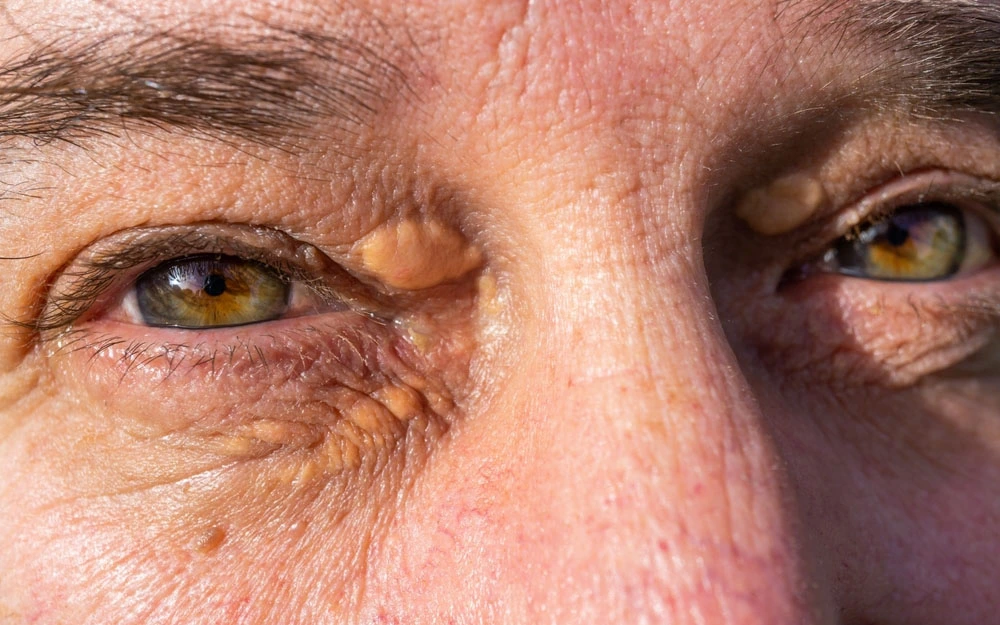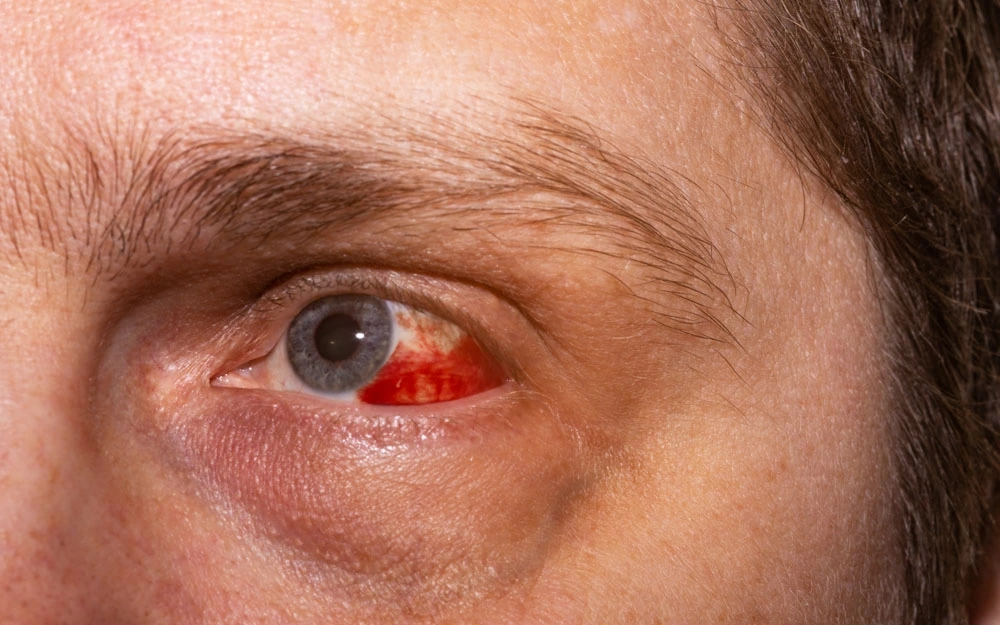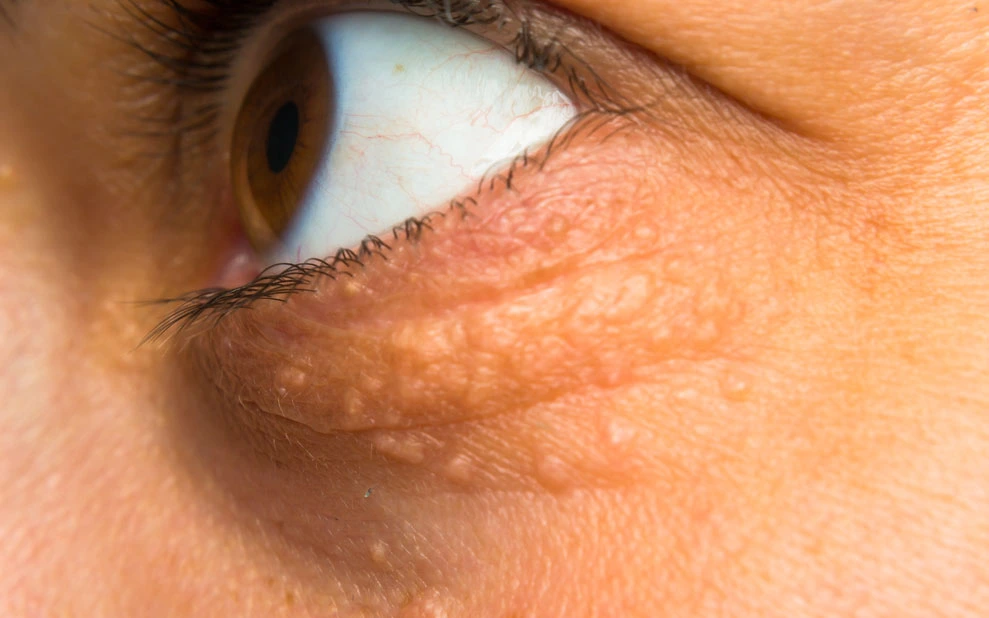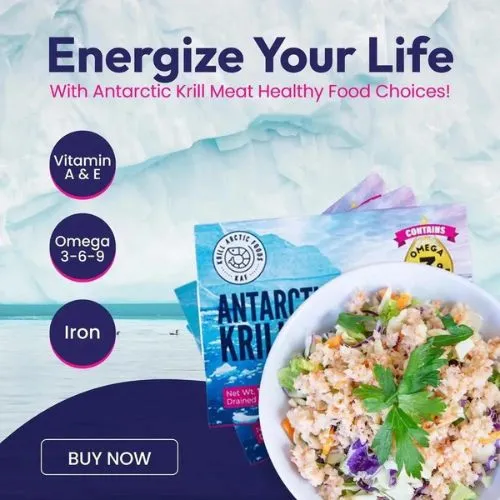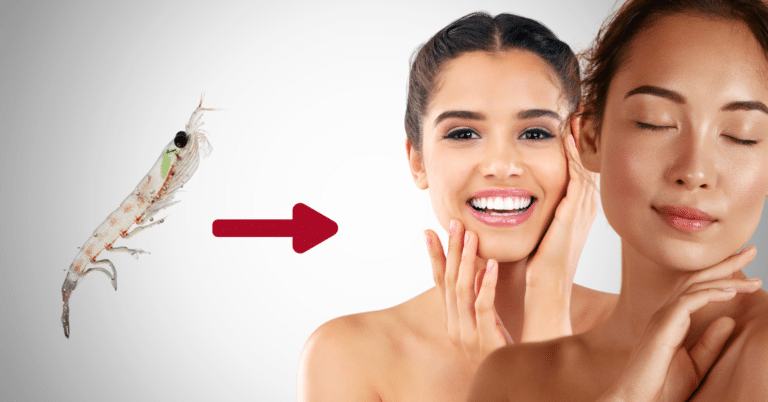In the contemporary landscape of health and wellness, the silent but potent threat of high cholesterol often looms large, quietly undermining cardiovascular health with few overt symptoms. However, subtle signs, including the face, may manifest in unexpected places, offering critical clues to this underlying condition.
Equally intriguing is the emerging role of krill, small marine creatures, in managing cholesterol levels, heralding a natural approach to bolstering heart health. This comprehensive exploration delves into the facial indicators of high cholesterol and elucidates how krill oil can effectively manage cholesterol levels.
4 Facial Indicators of High Cholesterol
High cholesterol typically flies under the radar, given its symptomless nature. However, certain facial signs can serve as silent alarms, alerting individuals to potential cholesterol imbalances. Recognizing these signs can prompt timely interventions, possibly averting severe cardiovascular complications.
Xanthelasmas
Yellowish fat deposits underneath the skin, often appearing on or around the eyelids. While not harmful, xanthelasmas can be a visual marker of high cholesterol levels, especially in younger individuals or those without a family history of these deposits.
Corneal Arcus
Appearing as a gray or white arc or a circle of the cornea, the corneal arcus is another sign that may indicate high cholesterol, particularly if observed in individuals under 40. While it is more common in older adults as a part of the aging process, its presence in younger people warrants a check-up for lipid levels.
Xanthomas
Like xanthelasmas, xanthomas are fatty deposits that can surface anywhere on the body but may also appear on the face. These raised bumps or patches can vary in size and signify hyperlipidemia or high levels of fats in the blood.
While these signs do not confirm high cholesterol, they suggest a potential imbalance. If you notice these indicators, consulting a healthcare provider for a lipid panel test is advisable to examine your cholesterol levels and overall cardiovascular risk.
Skin Pigmentation
Hyperlipidemia, a disorder characterized by excess lipids in the blood, particularly cholesterol, can lead to xanthoderma, a yellowish pigmentation of the skin. This discoloration often appears on the face and around the eyes due to cholesterol deposits in the skin layers. Though not always present, it can be an indicator of elevated cholesterol levels and might necessitate further evaluation and treatment.
Causes of High Cholesterol
High cholesterol can result from both lifestyle factors and genetics. Key contributors include:
- Smoking and Tobacco Use: Smoking decreases “good cholesterol” (HDL) and increases “bad cholesterol” (LDL), impacting overall cholesterol levels and raising the risk of heart disease.
- Stress: Chronic stress triggers hormonal changes that elevate cholesterol production in the body.
- Alcohol Consumption: Excessive alcohol intake can raise total cholesterol levels, contributing to various health conditions.
- Physical Inactivity: Lack of physical activity, such as aerobic exercise, can lead to lower HDL cholesterol levels. Sedentary lifestyles, including desk jobs or prolonged sitting, exacerbate this risk.
- Diet: Certain foods can influence cholesterol levels, with healthcare providers often recommending dietary changes or consultations with nutritionists to manage cholesterol through diet.
Incorporating Krill into Your Diet
While krill oil supplements are an easy way to get your omega-3s, incorporating whole krill into your diet can also be beneficial. Here are a few ideas and tips for integrating Krill Meat into your meals:
- Krill Salad: Add cooked and chilled krill to your favorite salad for a protein boost. Combine with mixed greens, avocado, cherry tomatoes, and a light krill dressing of olive oil and lemon juice for a refreshing and heart-healthy krill salad.
- Krill Pasta: Toss cooked krill into your alfredo pasta with garlic, cherry tomatoes, spinach, and olive oil for a simple yet nutritious dish. Whole-grain or vegetable-based pastas are excellent choices for added fiber.
- Krill Fried Rice: Incorporate krill into a fried rice dish with vegetables like carrots, peas, and bell peppers. Use brown rice for extra fiber and nutrients, and season with low-sodium soy sauce and a touch of sesame oil.
- Krill Omelette: Enhance your breakfast by adding krill to an omelet. Mix with eggs, spinach, tomatoes, and a sprinkle of cheese for a fulfilling start to your day.
Krill Oil: A Marine Marvel in Cholesterol Management
Krill are tiny animals that live in the ocean. They are becoming very popular in nutritional studies because they contain special omega-3 fatty acids that are different from what is found in normal fish oils. Krill oil is made from these small creatures and Krill oil is a good way to control cholesterol levels because of its unique benefits.
The Composition of Krill Oil
Krill oil is rich in both EPA and DHA, omega-3 fatty acids known for their cardiovascular benefits. What sets krill oil apart is the presence of phospholipids, which facilitate the body’s more efficient absorption of these fatty acids. Additionally, krill oil contains astaxanthin, a powerful antioxidant that contributes to its stability and efficacy.
Impact on Cholesterol Levels
Research suggests that krill oil can play a significant role in modulating lipid profiles by:
- Reducing Total Cholesterol: Studies have shown that krill oil can lower total cholesterol levels in individuals with high or borderline high cholesterol.
- Lowering LDL (Bad) Cholesterol: Perhaps more crucially, krill oil has been found to reduce levels of low-density lipoprotein, known as “bad” cholesterol, which is a primary contributor to plaque buildup in the arteries.
- Increasing HDL (Good) Cholesterol: Unlike many other treatments that primarily focus on lowering LDL, krill oil also has the potential to increase high-density lipoprotein (HDL) or “good” cholesterol, further enhancing cardiovascular health.
- Reducing Triglycerides: High triglycerides, another type of fat in our blood, are associated with an increased risk of heart disease. Krill oil supplementation can also help reduce these levels, offering a comprehensive approach to managing blood lipids.
The Antioxidant Advantage
The antioxidant properties of astaxanthin in krill oil protect the oil from oxidation and offer cellular protection against oxidative stress, which is connected to various chronic diseases, including heart disease. This dual action of managing cholesterol levels while protecting against oxidative damage makes krill oil a potent ally in cardiovascular health.
Integrating Krill Oil into Your Health Regimen
Incorporating krill oil into your dietary regimen can be a straightforward and effective strategy for managing cholesterol levels. However, it’s essential to consider the following:
Starting with Krill Oil Supplements
- Visit a Healthcare Professional: Before adding krill oil supplements to your diet, it’s important to consult with a healthcare provider, especially if you’re taking medications or managing health conditions, to ensure they’re appropriate for your situation.
- Choose High-Quality Supplements: Opt for high-quality, sustainably sourced krill oil supplements from reputable brands. Look for products that specify the amount of EPA and DHA and any certifications indicating purity and sustainable harvesting.
- Recommended Dosage: It is a very common question: how much krill oil should I take? A common dosage for krill oil supplements ranges from 250 to 500 mg daily, but this can vary based on individual needs and products.
Conclusion
The journey to uncovering the hidden signs of high cholesterol on the face reveals the body’s subtle distress signals and underscores the importance of proactive health monitoring. The emergence of krill oil as a natural, effective tool in managing cholesterol levels further highlights the power of marine nutrients in safeguarding heart health. By staying vigilant for physical indicators and embracing the marine bounty that krill oil represents, individuals can navigate towards improved cardiovascular well-being, ensuring a healthier, more vibrant life.
Frequently Asked Questions
Is High Cholesterol Related To Other Conditions?
Yes, high cholesterol is often associated with conditions like diabetes, obesity, and hypertension. Managing your cholesterol can also help control these related health issues.
Do Eggs Affect Cholesterol Levels?
One large egg contains about 186 mg of cholesterol, mostly in the yolk. Studies suggest that if your diet is low in cholesterol, eating up to one egg per day may be acceptable. To avoid cholesterol, opt for egg whites only.


